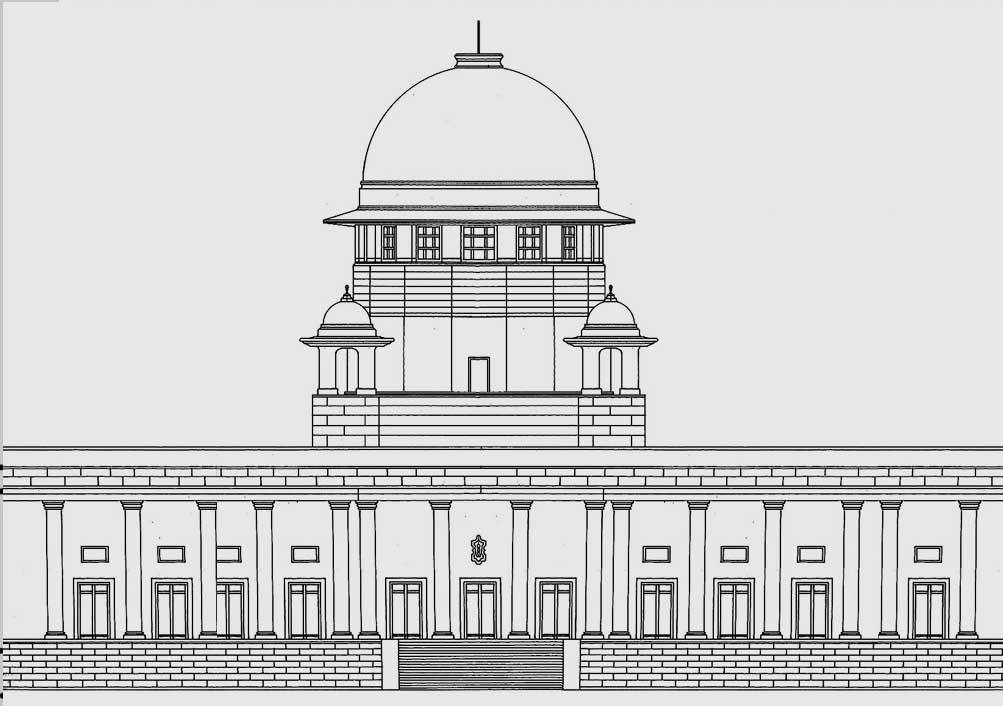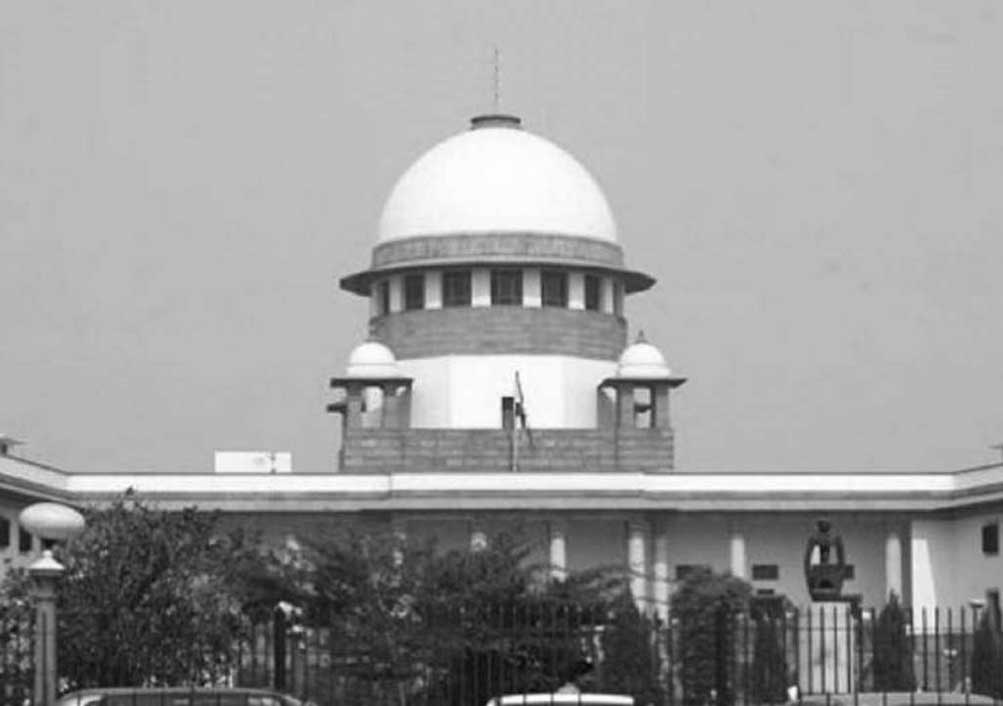Process of arbitration perverted by tribunal to provide undeserved windfall to DAMEPL: Apex Court directs discontinuation of execution proceedings for enforcing over Rs 7600 crore arbitral award against DMRC
Chief Justice D.Y. Chandrachud, Justices B.R. Gavai & Surya Kant [10-04-2024]

Read Order: Delhi Metro Rail Corporation Ltd v. Delhi Airport Metro Express Pvt. Ltd [SC- Curative Petition (C) Nos.108-109 of 2022]
Tulip Kanth
New Delhi, April 12, 2024: The Supreme Court has allowed a curative petition filed by the DMRC challenging a Rs 7,687 crore arbitral award passed in favour of the Delhi Airport Metro Express Private Limited in a dispute pertaining to a concession agreement, which envisaged a public-private partnership for providing metro rail connectivity between New Delhi Railway Station and the Indira Gandhi International Airport as well as other points within Delhi.
In this matter, the respondent, Delhi Airport Metro Express Private Limited (DAMEPL/ Concessionaire), a special- purpose vehicle incorporated by a consortium comprising of Reliance Infrastructure Limited and Construcciones Y Auxiliar de Ferrocarriles SA, Spain, bagged the contract for the construction, operation and maintenance of the Delhi Airport Metro Express Ltd (AMEL) in 2008. The Concession Agreement (2008 Agreement) envisaged a public-private partnership for providing metro rail connectivity between New Delhi Railway Station and the Indira Gandhi International Airport and other points within Delhi.
Under the 2008 Agreement, DAMEPL was granted exclusive rights, license and authority to implement the project and concession in respect of AMEL and the petitioner Delhi Metro Rail Corporation (DMRC) was to undertake clearances and bear costs relating to land acquisition, and civil structures. DAMEPL was to complete the work in two years, and thereafter, to maintain AMEL until August 2038.
In April 2012, DAMEPL sought a deferment of the concession fee, citing delays in providing access to the stations by DMRC. Meanwhile, DAMEPL expressed its intention to halt operations, alleging that the line was unsafe to operate. Operations were stopped on July 8, 2012. The next day, DAMEPL issued a notice to DMRC containing a non- exhaustive list of eight defects which, according to them, affected the performance of their obligations under the 2008 Agreement (Cure Notice). The notice stated that the defects were attributable to faulty construction and deficient designs which affected project safety.
DAMPEL issued a notice terminating the 2008 agreement. DMRC initiated conciliation under as well as arbitration proceedings. In 2013, DAMEPL halted operations and handed over the line to DMRC.
CMRS issued sanction and consequently, on June 30, 2013, the project assets were handed over by DAMEPL to DMRC. Meanwhile the arbitral tribunal passed the unanimous award holding that DAMEPL was entitled to the termination payment, expenses incurred in operating AMEL, refund of the bank guarantee and security deposits with the service providers. DMRC has paid the decretal amount of Rs 2599.18 Crores while Rs 5088 Crores under the decree is outstanding as on January 31, 2024.
DMRC's application filed under Section 34 of the Arbitration and Conciliation Act 1996 (Arbitration Act) before the Delhi High Court challenging the award, was dismissed. The Division Bench partly allowed the appeal. Against the decision of the Division Bench of the High Court, DAMEPL moved a Special Leave Petition under Article 136 of the Constitution was allowed and the award was restored. The review petition assailing this decision was dismissed and hence, the curative petition was filed before the Top Court.
The 3-Judge Bench of Chief Justice D.Y. Chandrachud, Justice B.R. Gavai and Justice Surya Kant observed that a finding based on no evidence at all or an award which ignores vital evidence in arriving at its decision would be perverse and liable to be set aside under the head of patent illegality. An award without reasons would suffer from patent illegality. The arbitrator commits a patent illegality by deciding a matter not within his jurisdiction or violating a fundamental principle of natural justice.
The Bench also made it clear that a judgment setting aside or refusing to set aside an arbitral award under Section 34 is appealable in the exercise of the jurisdiction of the court under Section 37 of the Arbitration Act. The jurisdiction under Section 37 of the Arbitration Act is akin to the jurisdiction of the Court under Section 34 and restricted to the same grounds of challenge as Section 34. However, the Constitution provides the parties with a remedy under Article 136 against a decision rendered in appeal under Section 37. This is the discretionary and exceptional jurisdiction of this Court to grant Special Leave to Appeal. As per the Bench, unlike the exercise of power under Section 37, which is akin to Section 34, the Court (under Article 136) must limit itself to testing whether the court acting under Section 37 exceeded its jurisdiction by failing to apply the correct tests to assail the award.
The Top Court was of the view that rather than considering the vital evidence of the CMRS certificate towards safety and effective steps, the arbitral tribunal focussed on the conditions imposed by the Commissioner on speed and regarding inspections. “While the Division Bench correctly noted that the certificate was relevant for the issue of the validity of termination, this Court held that safety was not in issue, even though DAMEPL insisted on discontinuing operations citing safety concerns. We respectfully disagree with this Courts re-assessment of the Division Benchs interpretation. The cure notice was relevant for the reasons stated above. Moreover, the fact that DAMEPL premised it on safety could not have been overlooked by the Tribunal. In doing so, it overlooked vital evidence pertaining to an issue that goes to the root of the matter. The cure notice was obviously on the record and merited consideration for its contents bearing on vital elements of safety”, it said.
It was clear from the record that DMRC took steps towards curing defects which led to the eventual resumption of operations. The award contained no explanation as to why the steps which were taken by DMRC were not effective steps within the meaning of the termination clause. It was further opined that the award was unreasoned as it overlooked the vital evidence in the form of the joint application of the contesting parties to CMRS and the CMRS certificate. The arbitral tribunal ignored the specific terms of the termination clause. Moreover, the Division Bench had correctly held that the arbitral tribunal ignored vital evidence on the record, resulting in perversity and patent illegality, warranting interference.
The Bench observed that the findings of the Division Bench were borne out from the record and were not based on a misappreciation of law or fact. This Court failed, while entertaining the Special Leave Petition under Article 136, to justify its interference with the well-considered decision of the Division Bench of the High Court. The decision of the Top Court failed to adduce any justification bearing on any flaws in the manner of exercise of jurisdiction by the Division Bench under Section 37 of the Arbitration Act.
It was held that the Top Court had restored a patently illegal award which saddled a public utility with an exorbitant liability and this caused a grave miscarriage of justice, warranting the exercise of the power under Article 142 in a Curative petition, in terms of Ashok Hurra vs Rupa Hurra.
Allowing the Curative petitions, the Bench held that the execution proceedings before the High Court for enforcing the arbitral award must be discontinued and the amounts deposited by the petitioner pursuant to the judgment of this Court shall be refunded. The orders passed by the High Court in the course of the execution proceedings for enforcing the arbitral award were also set aside.
The Bench concluded the matter by observing, “The curative jurisdiction should not be used to open the floodgates and create a fourth or fifth stage of court intervention in an arbitral award, under this Court's review jurisdiction or curative jurisdiction, respectively.”
Sign up for our weekly newsletter to stay up to date on our product, events featured blog, special offer and all of the exciting things that take place here at Legitquest.



Add a Comment